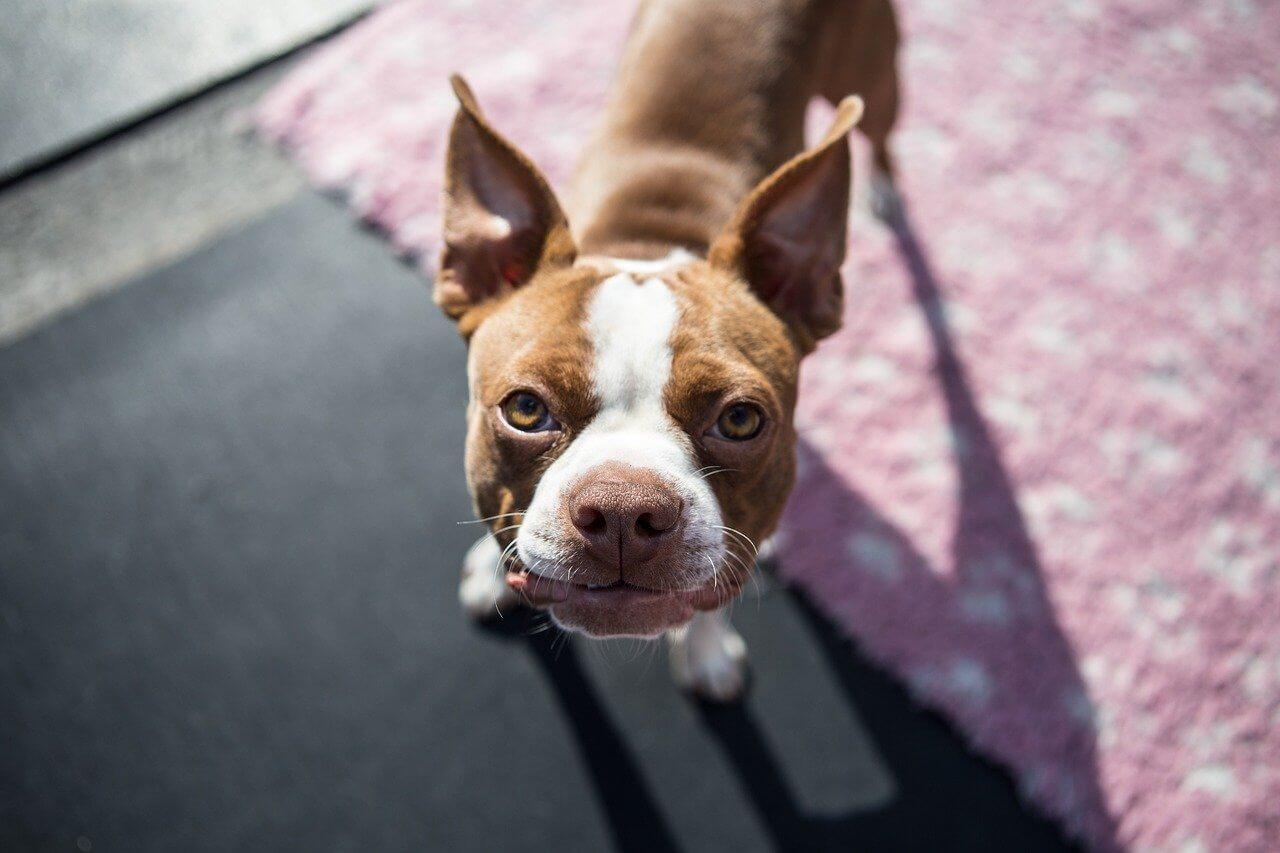So, it seems your dog is prone to yeast infections and you’re in need of a yeast infection home remedy?
If your dog tends to (or has) smelly, greasy, thickened, red, inflamed, itchy skin (and ears), and they’re scratching themselves, this is usually a good indicator that their Malassezia yeast levels on their skin have gotten out of hand due to an underlying health problem. Sometimes dogs can experience hair loss, dandruff, dark circles under their armpits, back legs, tail or upper back, and/or a brown discoloration around the base of their nails and ears too.
Yeast infections can be a result of antibiotic use, a weak immune system, dietary issues (like a high sugar diet), or poor grooming. A weakened immune system comes secondary to problems such as allergies, thyroid problems, and diabetes, so it’s important to get the primary condition under control in order to control the yeast infection.
When a dog develops a yeast infection, it’s incredibly uncomfortable for them. They may lick, bite, and chew on themselves to try and ease their discomfort. Unfortunately, their attempt at bettering the situation can actually make it worse! So, they really need a pet parent’s help when a yeast infection occurs.
In addition, it’s worth noting that some breeds are more prone to yeast build up. These include Shih Tzus, American Cocker Spaniels, Boxers, Poodles, Dachshunds, Australian Silky Terriers, English Setters, Basset Hounds, West Highland White Terriers, German Shepherds, Chinese Shar-Peis, and any other breeds with skin folds.

PetLab Co.’s In-House Pet Consultant Nicole’s Inside Knowledge
“If your vet suspects a Malassezia yeast infection, they can use a bit of clear tape to check what organisms are on your dog’s skin surface. This tape strip can then be dyed and looked at under a microscope to confirm the presence of Malassezia. Since yeast infections are usually secondary to an underlying health condition, your vet may also want to do a more thorough workup using blood tests to assess their hormonal parameters, for example.
It’s important to remember that the ears are a direct extension of the skin, so it is not uncommon for ear disease to be involved in these cases. In some cases, yeast infections may completely resolve. However, in dogs that have an underlying condition such as allergies, long-term treatment may be needed.”
Yeast Infection Home Remedy for Dogs
First things first, you should always consult with your vet before embarking on any at-home treatments, just to make sure that your suspected diagnosis is correct. If your dog is prone to yeast infections, you can help in managing them and reducing the frequency by introducing the following steps into your’s and your pup’s routine.
1. Groom Your Dog Daily

If your dog has a yeast infection, you need to bathe them with prescription anti-fungal shampoo from your vet. Massage the shampoo into their skin and coat and try and leave it on for a while before rinsing. The product usually needs at least 15 minutes of contact time with the yeast on the skin to be effective.
Brushing your dog every day can help dislodge debris and distribute naturally produced oils and microflora (good bacteria!) down through and across the coat. This is also a great opportunity to spot any signs of a yeast infection early so you can intervene and treat it before it worsens! Remember, if you have a wrinkly dog or a dog with skin folds to check in, around and beneath them, and brush gently there too. You may need to buy some chlorhexidine wipes to wipe down between these folds on a daily basis, to prevent the growth of yeast in these warm, humid areas.
You should also clean their ears regularly (once a week) if they are particularly prone to becoming gunky. Learn How To Clean A Dog’s Ears here and use a specific ear cleaner for dogs (never use products intended for humans on your dog!). Ears are just an extension of the skin so yeast infections can also take place here, causing an infection in the ear itself!
2. Use Natural, Topical Anti-Fungals
Another yeast infection home remedy for your dog is applying 100% virgin coconut oil to their skin to help manage their yeast overloads. The fatty acids in coconut oil can help kill the damaging organisms without harming the essential friendly bacteria, as it’s high in antioxidants. It can also help their skin heal from the damage they may have self-inflicted on the skin because of the discomfort caused by the infection.
PetLab Co. Pro Tip: Some dogs think coconut oil tastes great, so they may try and lick it off the places their tongue can reach! Don’t panic – ingesting coconut oil is also a great way of promoting their skin’s health and reducing yeast build up in their gut! Try adding a teaspoon of coconut oil to their food every day per 10lbs of body weight (or 1 tablespoon per 30lbs) too!
3. Avoid Overheating
Yeast breeds in the heat and humidity! So be wary of letting your dog hang out in the sun too long in summer and also make sure they are dried off properly after bath time. This is also why it’s important to prevent them from licking the same area continuously, as it will never dry and offers the perfect breeding ground for yeast overgrowth. In the hotter months, walk them in the morning or evening to help avoid the sun when it’s at its strongest between 10 am and 4 pm – this is also important for avoiding heatstroke!
4. Protect The Microbiome!
Yeast is less likely to grow out of control and cause infections if your pup’s gut has the correct quantities and balance of healthy bacteria in their GI tract/gut! But, what is the gut microbiome? The gut microbiome is the totality of microorganisms and bacteria living in the gastrointestinal tract and is present in living organisms. It’s essential for supporting the immune system, regulating the metabolism, and breaking down food effectively.
Support their microbiome by making sure to reduce the sugar levels in your dog’s diet, focusing on more high-quality protein rather than cheap low-quality food. Yeast breeds off of sugar! This will help your pup’s gut microbiome in the long run by maintaining optimum levels of healthy bacteria in there. Read our blog on How To Safely Switch Your Dog’s Food here if you think heightening their protein levels is a good idea.
Probiotic supplements, designed specifically for dogs, can also help establish a healthy, desirable balance of friendly bacteria in the gastrointestinal tract, which prevents the gut from becoming inflamed and allowing yeast build-up to occur. They’ll help support your dog’s gut microbiome’s health and keep it ticking at an optimum condition with the correct balances of good bacteria. By introducing probiotics you’ll be ensuring a healthy balance of commensal bacteria in their guy which prevents pathogenic yeast and bacterial build-up which can lead to infection and various other gut health problems.
Final Thoughts
Managing your dog’s yeast infection can be challenging, but with consistent care and the right yeast infection home remedy steps, you can help keep it under control. Regular grooming, using natural topical solutions like coconut oil, and supporting a healthy gut microbiome are all effective ways to prevent yeast from taking over. Remember, reducing sugar in your dog’s diet and focusing on high-quality ingredients can make a big difference too. By staying proactive and consulting with your vet, you’ll give your dog the best chance at relief from the discomfort of yeast infections and help them lead a happy, itch-free life!







